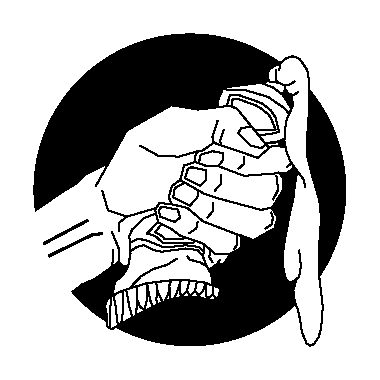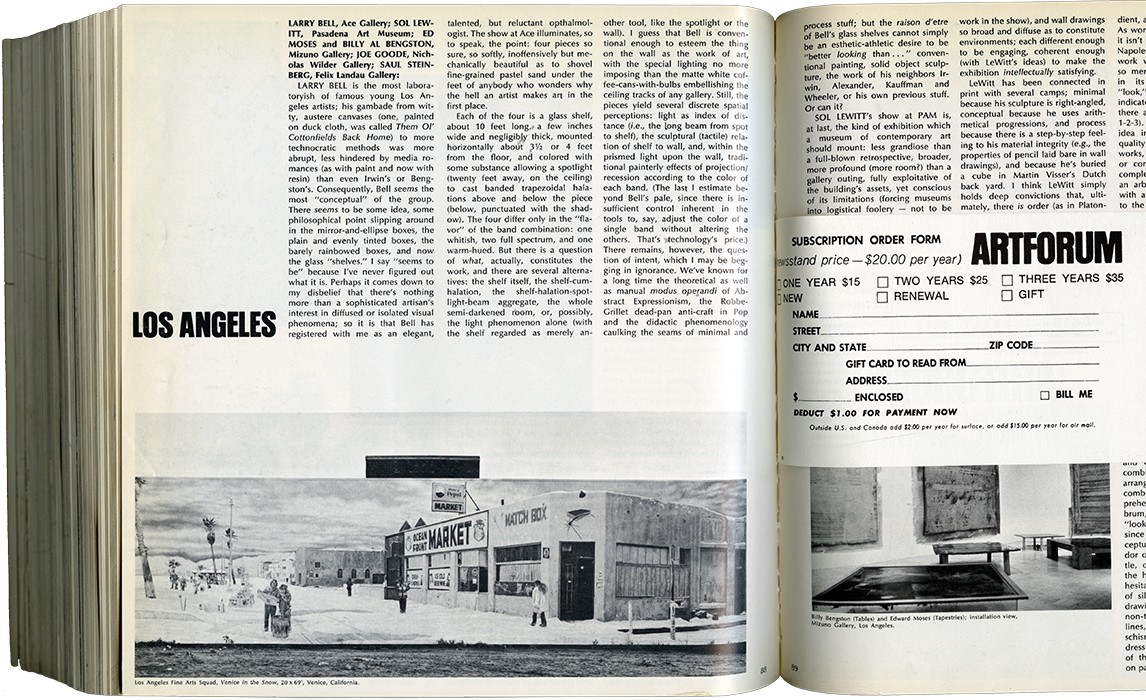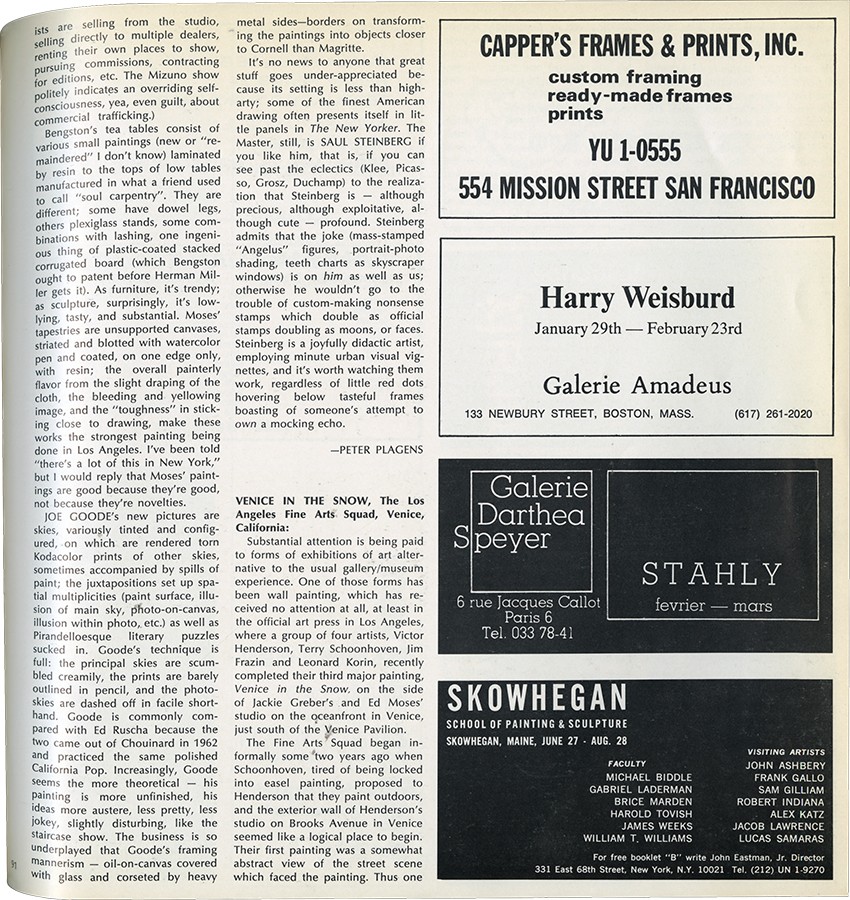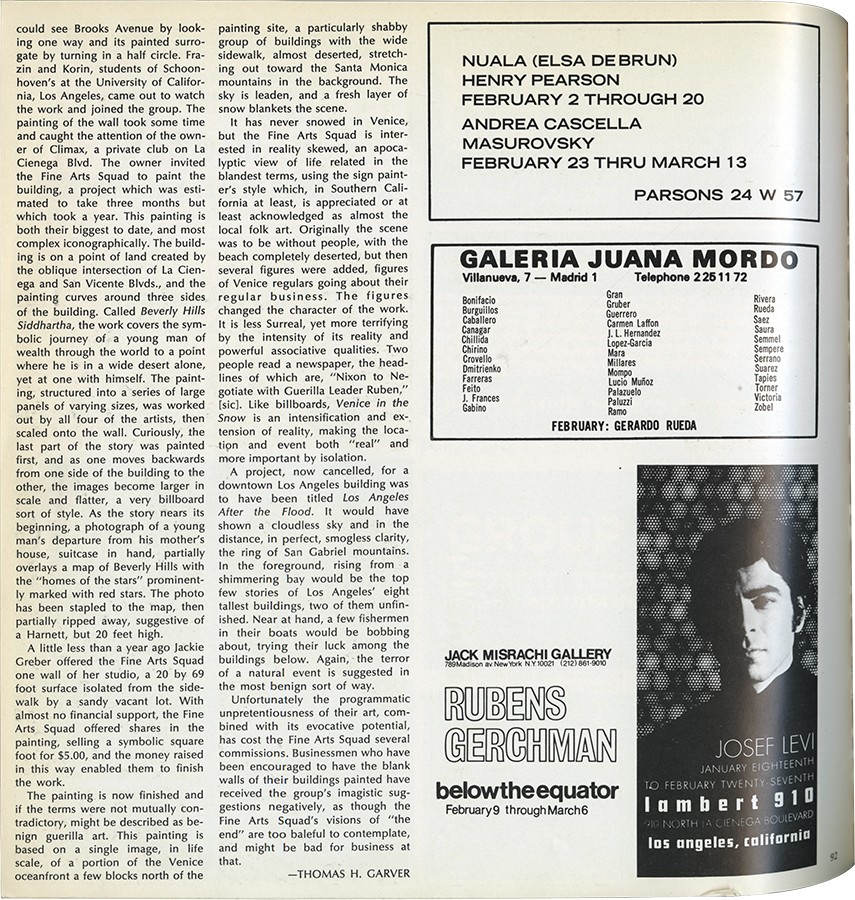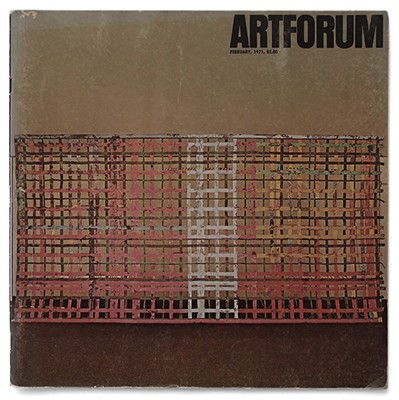Substantial attention is being paid to forms of exhibitions of art alternative to the usual gallery/museum experience. One of those forms has been wall painting, which has received no attention at all, at least in the official art press in Los Angeles, where a group of four artists, Victor Henderson, Terry Schoonhoven, Jim Frazin and Leonard Korin, recently completed their third major painting, Venice in the Snow, on the side of Jackie Greber's and Ed Moses' studio on the oceanfront in Venice, just south of the Venice Pavilion.
The Fine Arts Squad began informally some two years ago when Schoonhoven, tired of being locked into easel painting, proposed to Henderson that they paint outdoors, and the exterior wall of Henderson's studio on Brooks Avenue in Venice seemed like a logical place to begin. Their first painting was a somewhat abstract view of the street scene which faced the painting. Thus one could see Brooks Avenue by looking one way and its painted surrogate by turning in a half circle. Frazin and Korin, students of Schoonhoven's at the University of California, Los Angeles, came out to watch the work and joined the group. The painting of the wall took some time and caught the attention of the owner of Climax, a private club on La Cienega Blvd. The owner invited the Fine Arts Squad to paint the building, a project which was estimated to take three months but which took a year. This painting is both their biggest to date, and most complex iconographically. The building is on a point of land created by the oblique intersection of La Cienega and San Vicente Blvds., and the painting curves around three sides of the building, Called Beverly Hills Siddhartha, the work covers the symbolic journey of a young man of wealth through the world to a point where he is in a wide desert alone, yet at one with himself. The painting, structured into a series of large panels of varying sizes, was worked out by all four of the artists, then scaled onto the wall. Curiously, the last part of the story was painted first, and as one moves backwards from one side of the building to the other, the images become larger in scale and flatter, a very billboard sort of style. As the story nears its beginning, a photograph of a young man's departure from his mother's house, suitcase in hand, partially overlays a map of Beverly Hills with the "homes of the stars" prominently marked with red stars. The photo has been stapled to the map, then partially ripped away, suggestive of a Harnett, but 20 feet high.
A little less than a year ago Jackie Greber offered the Fine Arts Squad one wall of her studio, a 20 by 69 foot surface isolated from the sidewalk by a sandy vacant lot. With almost no financial support, the Fine Arts Squad offered shares in the painting, selling a symbolic square foot for $5.00, and the money raised in this way enabled them to finish the work.
The painting is now finished and if the terms were not mutually contradictory, might be described as benign guerilla art. This painting is based on a single image, in life scale, of a portion of the Venice oceanfront a few blocks north of the painting site, a particularly shabby group of buildings with the wide sidewalk, almost deserted, stretching out toward the Santa Monica mountains in the background . The sky is leaden, and a fresh layer of snow blankets the scene.
It has never snowed in Venice, but the Fine Arts Squad is interested in reality skewed, an apocalyptic view of life related in the blandest terms, using the sign painter's style which, in Southern California at least, is appreciated or at least acknowledged as almost the local folk art. Originally the scene was to be without people, with the beach completely deserted, but then several figures were added, figures of Venice regulars going about their regular business. The figures changed the character of the work. It is less Surreal, yet more terrifying by the intensity of its reality and powerful associative qualities. Two people read a newspaper, the headlines of which are, "Nixon to Negotiate with Guerilla Leader Ruben," [sic]. Like billboards, Venice in the Snow is an intensification and extension of reality, making the location and event both "real" and more important by isolation.
A project, now cancelled, for a downtown Los Angeles building was to have been titled Los Angeles After the Flood. It would have shown a cloudless sky and in the distance, in perfect, smogless clarity, the ring of San Gabriel mountains. In the foreground, rising from a shimmering bay would be the top few stories of Los Angeles' eight tallest buildings, two of them unfinished. Near at hand, a few fishermen in their boats would be bobbing about, trying their luck among the buildings below. Again, the terror of a natural event is suggested in the most benign sort of way.
Unfortunately the programmatic unpretentiousness of their art, combined with its evocative potential, has cost the Fine Arts Squad several commissions. Businessmen who have been encouraged to have the blank walls of their buildings painted have received the group's imagistic suggestions negatively, as though the Fine Arts Squad's visions of "the end" are too baleful to contemplate, and might be bad for business at that.
